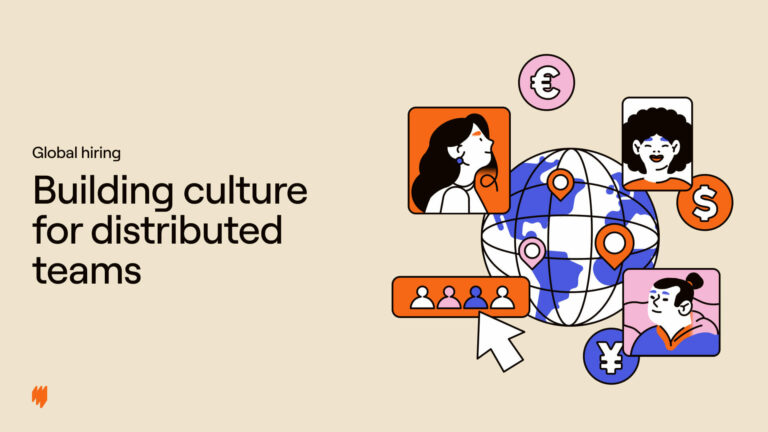In business, competition is rife, and so is the profound desire to maximize profitability and stay future-proof. Employing a contingent workforce is now increasingly viewed as a key strategy organizations can use to scale operations quickly and drive innovation and productivity.
Managing a contingent workforce is more than just a temporary fix—it’s an imperative need for businesses who want to stay agile, flexible, cost-efficient, innovative, and unlock fresh perspectives in a competitive and dynamic market landscape. This recent finding attests to how crucial contingent workforces are for businesses: The global contingent workforce management market is projected to reach $465.2 billion by 2031.
In this article, we’ll explore the meaning of contingent workforce and the benefits and challenges you might face.
So who are contingent workers?
What is a contingent workforce?
A contingent workforce consists of employees who are bound by time or project-based contracts. A contingent employee can be a freelancer, consultant, part-timer, or any professional on a temporary employment agreement.
Businesses often hire these employees to meet their operational demands and stay competitive in the industry. The combination of internal and contingent teams contributes to improved productivity and growth.
From a financial standpoint, hiring a contingent workforce is often more preferable to hiring full-time employees. You only pay for their skills when needed and are not responsible for insurance, taxes, or benefits. Also, the availability of talent is a significant advantage of doing so — Freelancers and contractors possess the skills you require, allowing you to complete important tasks on demand. The gig industry offers a diverse skill set that is hard to find elsewhere, bridging any skill gaps in your workforce.
Additionally, the process of replacing full-time employees can be cumbersome. Amidst unprecedented change and economic uncertainty, employees are let go or leave for other opportunities. In such cases, a contingent employee can serve as a temporary replacement until you train a recruit.
Types of contingent workforces
- Freelancers
This group includes individuals who are self-employed and provide services to multiple clients at once. They often specialize in a specific skill set. Freelancers offer flexibility in terms of hours and workload. They can be hired for expert tasks, saving the company the cost of training a full-time employee. - Consultants
These individuals or companies provide expert advice professionally in a specific field such as management, education, or marketing. Consultants bring a wealth of experience and specialized knowledge to a project. They can provide a fresh perspective and help improve business practices. - Temporary contract workers
These people are hired for a specific time period, usually to assist with a heavy workload or to cover for permanent employees during absences. Temporary contract workers provide a short-term solution to workload fluctuations without the commitment of a permanent hire. - Outsourced workers
These are workers from external firms or vendors who are contracted to perform specific tasks or functions. Outsourcing can help a company focus on its core competencies by delegating non-core tasks to specialists. This can also lead to cost savings in terms of labor and overhead costs. - Gig workers
These are workers who operate within a gig setup, taking on piecemeal work often facilitated by a digital platform like Uber or TaskRabbit. Gig workers offer extreme flexibility and can be a cost-effective way to get routine tasks done.
Each type of contingent worker offers unique advantages, but all provide flexibility and potential cost savings. Companies can mix and match these types of contingent workers to best meet their requirements.
The benefits of a well-managed contingent workforce
Flexibility and economy aside, contingent workers provide several other benefits, too. Here are a few of them.
Fill skill gaps quickly
With your company and tech growing, it becomes a necessity to increase your hiring. The hiring process, however, is easier said than done. It’s a well-established fact that hiring for new candidates may even stretch for more than a month. Thus, it takes a long time to complete the process and fill in the position. On the other hand, hiring contingent workers is quick. They already have the required talent, making the selection easier. Also, you don’t have to think about it on a long-term basis.
Hire diverse and expert professionals
According to a report that came out a few years back, contingent staffing models allow companies to find top talent for hard-to-fill positions. The prevailing stigma that contingent workers are less talented is flaking off as professionals prefer the non-traditional work model to have the much-wanted work-life balance. The above study only adds more proof to this.
Hiring such a diverse array of individuals across borders brings in unique, thought-provoking perspectives that help grow your business. More often than not, innovation is what a business needs more than talent. With consultants who weed out ineffective strategies through analysis and plan working business models in place, the contingent workers help grow your business faster.
Ensure a flexible employment model
With the market constantly changing and becoming more competitive, your company must stay agile and fluid to stay adept. Non-permanent workers fulfilling your short-term goals resonate well with agility and are a perfect fit for your evolving business.
Reduce costs
A study by the Society for Human Resource Management (SHRM) found that the average cost per hire was $4,129 in 2019 but surged by 14 percent to approx. $4,700 in 2023. It will almost certainly increase every year. Hiring, an essential aspect of a growing business, then becomes inevitable, but you can still control costs with a contingent workforce.
Contingent workers are economically advantageous to employers as they are employed on a project basis, helping employers reduce costs while tapping on new opportunities and exploring new markets. Additional labor costs, such as permanent employee benefits, don’t apply to them, making a contingent workforce remarkably cost-effective and resourceful.
With a flexible workforce, it’s easy for employers to adjust their staffing requirements based on project mandates. Contingent workers possess specialized skills and can apply their expertise without the need for long-term training. Most importantly, they reduce administrative hassles that are otherwise prevalent while hiring permanent employees, as they can be onboarded faster with lesser downtime.
With contingent workers, you can avoid expenses on:
- Hikes
- Insurance plans
- Profit-sharing plans
- Paid leaves
- Pension contributions
Thus, you pay only for what you get and avoid added expenses.
Avoid complexities during tax filings
As an employer, you must take care of your employees’ taxes and abide by the local laws and compliance. A complex task in hand, more so if you are a global employer. Contingent workers, unlike your core employees, do not come under your payroll. By law, they are self-employed individuals who can take care of their taxes. You need not include their taxes under your hood. This arrangement thus lets you save time and prevent penalties for non-compliance with government taxes.
Freedom to experiment
Innovating is a precarious task for companies. It involves money and several other risks. Hiring contingent workers lets you experiment with new approaches. With only temporary arrangements, you can try, and if it doesn’t work, it still won’t affect you much. It is easier to withdraw the idea with them on board and is the cherry on top amidst other benefits.
Challenges in managing a contingent workforce
While there are plenty of benefits associated with hiring contingent workers, it’s not an activity without its difficulties. Organizations must understand and navigate these challenges to leverage the potential of a contingent workforce to its fullest.
Reduced control over employees
Despite working for you, contingent workers aren’t your employees. This restricts your control over their work. While you can set out work, what you expect from them, and track their progress, you cannot control the time they spend on your project, the methods they use to accomplish the task, or monitor the stepwise flow as they work. Simply put, you can define what they must do, but not how they do it. You can only focus on the end result but not the approaches.
Trust and reliability
The time taken to onboard a contingent worker is significantly less than a core employee. As time-saving as that can be, it also brings in the challenge of trust. A faster approach might make you overlook the screening process. This can open a can of worms, as letting in one wrong person can cause severe damages.
Security risks
Despite being temporary workers, they work with your data and the intricate details of your business. Sometimes it also involves confidential data. This involves a risk factor as opposed to hiring a core employee for the same work. Even minor negligence can cause damages as serious as soiling your business and its reputation.
Legality and non-compliance
By law, the employer has minimal legal responsibilities to contingent workers than direct hires. However, it gets tricky to classify them apart based on the legislation. Companies struggle to define whether an individual is an employee or a contingent worker. The most prevalent example comes in the case of contractors.
While some consider them a part of the contingent workforce, some consider them temporary employees. Further, different countries have different legal terminologies and classify them differently. Employee misclassification might lead to penalties and legal complexities. Thus, being a global employer can have your work cut out for you.
Team culture and cohesion
The team dynamics can isolate a contingent worker. The bonding will not be intact as they work with your team for only a short time. This lack of cohesion can affect their productivity, which would eventually impact the business. Besides, if a majority of your staff are contingent workers, the teams will be detached, leading to poor company culture. This can again affect your reputation.
Talent being unavailability when you need it
Contingent workers work on their own terms. You cannot define their working hours or demand they be available during crises. Thus, their contribution to your project will not be consistent or streamlined. Further, in case of sudden requirements, you cannot depend on a contingent worker. In such cases, it is easier to find a suitable existing employee than it is to locate one among contingent workers.
Key components of a contingent workforce strategy
Developing an effective contingent workforce strategy requires careful planning and execution. Here are some steps to help you get started:
- Define your business objectives
Understand what you want to achieve with a contingent workforce. Are you looking to fill short-term needs, bring in specialized skills, or reduce costs? Your goals will guide your strategy. - Assess your current workforce
Evaluate your existing staff and identify any gaps in skills or resources. This will help you determine what kind of contingent workers you need. Identify suitable roles for contingent workers: Not all roles are suitable for contingent workers. Determine which tasks can be effectively performed by non-permanent staff. - Establish clear policies
Develop policies for hiring, managing, and compensating contingent workers. Be sure to comply with all relevant labor laws and regulations. - Choose the right hiring channels
There are many ways to find contingent workers, including staffing agencies, job boards, and freelance platforms. Choose the channels that best fit your needs. - Implement a management system
Use a system to track and manage your contingent workers. The Multiplier platform makes HR infinitely simpler and more efficient. This ensures productivity remains high, mistakes are avoided, and the stress of HR tasks is a thing of the past. - Provide proper onboarding and training
Even though contingent workers are not permanent employees, they still need to understand your company culture and how to do their jobs effectively. - Evaluate performance regularly
Regular performance evaluations can help you ensure that your contingent workers are meeting your expectations and contributing to your business objectives. - Maintain good relationships
Treat your contingent workers well. Good relationships can lead to higher-quality work and make it easier to attract and retain top talent. - Review and adjust your strategy regularly
As your business needs change, so too should your contingent workforce strategy. Regularly review and adjust your strategy to ensure it continues to serve your business well.
Establishing a successful contingent workforce requires ongoing effort, but it can provide your business with greater flexibility, cost savings, and higher-quality work. Use these tips to help you create an effective strategy that works for you. By focusing on your contingent workforce strategy, you’ll be able to ensure that your organization is leveraging this valuable resource in a way that meets its goals and objectives.
How to forecast and plan for contingent workforce needs
Now let’s discuss the most crucial components to successfully run your business with contingent personnel: forecasting and planning your workforce needs.
Factors influencing the talent requirements
Organizations should refrain from planning for a contingent workforce in a purely instinctive way. Contingent workforce requirements should instead be based on a process of in-depth introspection.
Here are some of the aspects that can help businesses gain a comprehensive perspective on their current and future contingent workforce needs:
- Companies should have insights into their current contingent workforce concerning skills, roles, cost to hire, compliance status, and job fit.
- The potential skill gaps and challenges within the current workforce strategy also must be taken into account, such as lack of skills, changes in the compliance landscape, and talent mapping concerns.
- Metrics and goals laid for the contingent teams can speak volumes about an organization’s preparedness to leverage this talent pool. Aligning contingent resources with the business objectives and goals is also worth considering.
- Businesses can use supply and demand forecasting to determine the required workload and the type, headcount, and duration of commitment for contingent workers. A company’s overall objectives, metrics, and swiftness to adjust to changing market trends are just as crucial.
- Employers should also have an understanding of how seasonal events or unpredictable scenarios can impact the business. Identifying changes influenced by seasonal variations, occasions, particular weekdays, and holidays can help them make adjustments for their contingent workforce planning.
- Most importantly, stakeholders should be highly observant and consistently analyze their strategies, periodically comparing them to their set benchmarks and expectations so they can make necessary adjustments for meeting their objectives.
Managing workforce spend
Organizations should also have a deep understanding of their contingent talent and external spending. Disregarding this might translate to excessive workforce costs, operational bottlenecks, and imprudent decision-making. To this end, a centralized system of contingent workforce management (CWM) can enable companies to get a comprehensive view into how and where the contingent talent is to be employed across the enterprise. Moreover, offloading all the hassle to external support like managed service providers (MSP) and vendor management systems (VMS) can streamline the contingent talent management process holistically.
Common risks in managing a contingent workforce
Ensuring adherence to compliance and preparing beforehand for enterprise risks related to the intake of contingent workers is paramount. Failing to do so might result in harsh penalties and fines, causing a dent to an organization’s reputation.
Listed below are some potential risk categories that employers must address for contingent workforce risk management:
Talent misclassification
Misattributing the efforts of one contingent worker to a different person or misclassifying a worker can lead to back payments to workers and massive penalties for the employer. Even though the workforce classification comes within the purview of the onboarding process, employers should ensure that the role dynamics of the contingent worker don’t change over time, or else it’ll invalidate the original classification. If this is ignored, it may attract further penalties and investigations for the business.
Unlawful behavior
The transient nature of the global contingent workforce makes them prone to unethical and unjust behavior from some contracting officers. Much like an organization that is exposed to financial fraud, the integrity of the candidate selection process can also get jeopardized sometimes due to certain types of fraud.
Compliance
Employers failing to comply with employment standards regulation are exposed to compliance risks, inviting a plethora of penalties, fines, and other unforeseen challenges.
Counterparty
Organizations should exercise due diligence while selecting third-party vendors/suppliers entrusted with providing the contingent workforce. For instance, if these direct or indirect suppliers are involved in unlawful practices, it may expose a client company to potential counterparty risks, making it liable for severe legal repercussions.
Code of conduct
These risks underscore the importance of maintaining ethical standards and adequate behavior by both contingent workers and internal managers while working on a project.
Financial irregularities
When managing a contingent workforce, organizations should maintain stringent financial monitoring on transactions involving contingent workers. Ensuring this will safeguard companies against fraudulent activities and complex errors.
Co-employment
These risks refer to the potential for significant legal and business risks that may arise when the employer is working closely with contingent workers and their providers. Companies need to be extra vigilant during such co-employment scenarios.
How Multiplier can help you manage a flexible and resilient contingent workforce
Contingent workers are a modern take on the traditional employment model. They offer flexibility and are a perfect fit for the changing business markets. Despite having a few challenges, when managed right, they can reap a whole lot of benefits. Multiplier is here to help you manage your contingent workers.
We are beside you in each step to effectively hire and manage them. Our EOR services let you hire across borders without you having to set up local legal entities. We serve as your local platform to ensure a smooth hiring process.
Multiplier’s holistic HR support tools can help you broaden your hiring pool and manage your HR operations in every country compliantly. Moreover, we know how hectic it can be to manage global payroll and offer suitable benefits. Multiplier offers a single platform to manage your global payroll and benefits with just a few clicks.
Managing a contingent workforce becomes seamless with Multiplier’s suite of services and tools. You can set up a global team in 150+ countries and onboard them compliantly with our EOR solutions.
Schedule a demo to know more.
FAQs
Q1. What does a contingent workforce manager do?
A contingent workforce manager helps manage an organization’s provisional and non-permanent workforce, aligning them with organizational objectives.
Q2. What are examples of contingent workers?
Contingent workforce examples include freelancers, consultants, part-timers, or any professionals on a temporary employment agreement. They are not guaranteed the same benefits as those of a full-time staff.
Q3. How does global contingent workforce management differ from local management?
Global contingent workforce management entails an extensive understanding of diverse labor laws across different geographies, talent pool management across such countries, and compliance standards concerning hiring and overseeing contingent talent globally. Contrarily, the local management includes the sourcing and administering of contingent talent within one region while adhering to regulatory requirements within that area.
Q4. How can analytics improve contingent workforce management?
Leveraging analytics can help provide actionable insights and a comprehensive view of workforce costs and overall performance. Contingent workforce analytics help streamline contingent workforce management, leading to better resource allocation, decision-making, and operational efficiency.

Ria Thomas
Product Marketing Manager
Ria is a Product Marketing Manager at Multiplier





